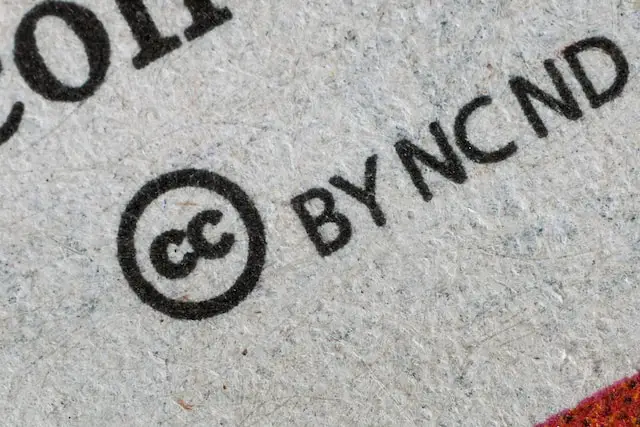Trademarks are used to protect brands, logos, slogans, or any unique element that identifies a product or service. Copyrights safeguard original works of authorship such as books, music, films, artwork, and software.
What is a trademark?

A trademark is a symbol, word, phrase, design, or even a combination of these elements that identifies and distinguishes the source of goods or services from others in the marketplace. In simpler terms, it’s like the signature stamp on your brand.
Trademarks serve as valuable assets for businesses by establishing their unique identity and building trust with customers. They can be registered with government agencies to provide legal protection against unauthorized use by competitors. Just picture those familiar logos like Nike’s swoosh or McDonald’s golden arches – they are prime examples of powerful trademarks that instantly evoke recognition.
What is a copyright?

Copyright is a legal term that refers to the exclusive rights given to creators of original works. It protects artistic, literary, musical, and even software creations from being copied or used without permission. In simpler terms, it gives the creator ownership over their work and allows them to control how it is used.
When someone has a copyright on their work, they have the right to reproduce it, distribute copies of it, display or perform it publicly, and create derivative works based on it. This means that others cannot use or profit from someone’s creative expression without obtaining proper authorization.
Copyrights give creators control over who can use their original works and how they can be used. Whether you’re an author protecting your novel or a musician safeguarding your songs, understanding copyright law is essential for preserving your intellectual property rights.
Trademark Vs. Copyright – Key differences
| Aspect | Trademark | Copyright |
|---|---|---|
| Purpose | Protects branding elements | Protects original creative works |
| Subject Matter | Logos, brand names, slogans, designs | Literary, artistic, musical, dramatic works, etc. |
| Protection Scope | Specific industry or field of business | Any tangible expression of ideas |
| Registration | Can be registered with government authority | Automatic upon creation (registration optional) |
| Duration | Potentially indefinite | Life of the author + 70 years (varies by jurisdiction) |
| Infringement | Confusion or dilution of brand identity | Unauthorized use, reproduction, distribution, etc. |
The benefits of having a trademark
- Brand Protection: A trademark provides legal protection for your brand’s identity, including logos, names, and slogans. It prevents others from using similar marks that could cause confusion among consumers, protecting your brand’s reputation and goodwill.
- Exclusive Rights: By obtaining a registered trademark, you gain exclusive rights to use the mark in connection with the goods or services covered by the registration. This exclusivity helps you establish a unique brand presence in the market and prevents competitors from capitalizing on your brand’s success.
- Consumer Recognition: A trademark helps consumers identify and distinguish your products or services from those of others. It builds brand recognition, trust, and loyalty, as customers associate your trademark with a certain level of quality and reliability. Over time, a strong trademark can become a valuable business asset.
- Expansion and Licensing Opportunities: Having a registered trademark can open doors to new business opportunities. It provides a solid foundation for expanding into new markets and licensing your brand to others. Licensing your trademark allows you to generate revenue by granting others the right to use your mark in specific territories or for specific products.
- Legal Remedies: Owning a trademark gives you the ability to take legal action against infringers. If someone uses a similar mark without authorization, you can enforce your trademark rights and seek remedies such as injunctive relief, damages, or the destruction of infringing goods. Trademarks act as a deterrent, discouraging others from infringing on your brand.
The benefits of having copyright
- Legal Protection: Copyright provides legal protection for your original creative works. It gives you exclusive rights to reproduce, distribute, display, perform, and create derivative works based on your work. This protection helps deter others from copying or using your work without permission.
- Economic Rights: Copyright allows you to monetize your creative works. You have the right to sell or license your work, granting others permission to use it in exchange for fees or royalties. This can be a significant source of income for creators, such as authors, musicians, filmmakers, and software developers.
- Recognition and Attribution: Copyright ensures that you are recognized as the creator of your work. It allows you to claim authorship and be credited for your creative contributions. This recognition is crucial for establishing your reputation as an artist or creator and can lead to further opportunities and collaborations.
- Control and Preservation: Copyright gives you control over how your work is used and distributed. You can decide where and how your work is published, displayed, or performed. This control allows you to maintain the integrity of your work and ensure it is presented in a manner consistent with your artistic vision.
- Legal Remedies: Owning a copyright provides you with legal remedies in case of infringement. If someone uses your work without permission, you can take legal action to enforce your rights and seek damages or injunctions. Copyright serves as a deterrent against unauthorized use and protects your investment of time, effort, and creativity.
What happens if you copy a trademark?
What happens if you copy a trademark? Copying someone else’s trademark can have serious legal consequences. Trademarks are legally protected symbols, names, logos, or phrases that distinguish the goods or services of one business from another. When you copy a trademark without permission, you may be infringing on someone else’s intellectual property rights.
Trademark infringement can result in lawsuits and hefty fines. If the owner of the trademark discovers your unauthorized use, they can take legal action to stop you from using their mark and seek damages for any harm caused to their brand reputation or sales.
Image Credits
Featured Image By – pikisuperstar on Freepik
Image 1 By – 386458 from Pixabay
Image 2 By – Umberto on Unsplash








